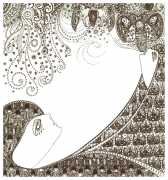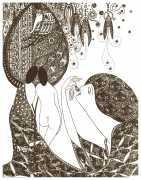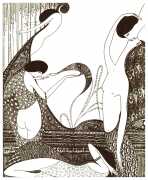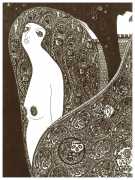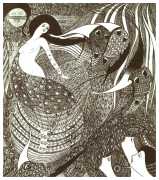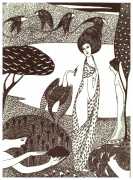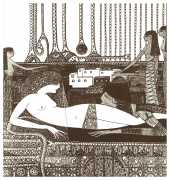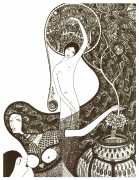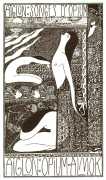 Margit Kaffka was a woman ahead of her time, a passionate and visionary writer who through her writings chronicled the physical and spiritual hardships of independent women in powerful novels including Színek és Évek (Colours and Years) in 1912 and Hangyaboly (The Ant Heap) in 1917. In 1906 she published a novella called Ópium-Álmok or Opium Songs, almost certainly based on first-hand experience, and three years later Attila Sassy, using his Aiglon nom d’artiste, produced a series of Beardsleyesque prints to illustrate her text.
Margit Kaffka was a woman ahead of her time, a passionate and visionary writer who through her writings chronicled the physical and spiritual hardships of independent women in powerful novels including Színek és Évek (Colours and Years) in 1912 and Hangyaboly (The Ant Heap) in 1917. In 1906 she published a novella called Ópium-Álmok or Opium Songs, almost certainly based on first-hand experience, and three years later Attila Sassy, using his Aiglon nom d’artiste, produced a series of Beardsleyesque prints to illustrate her text.
This portfolio is considered one of the highlights of Hungarian Art Nouveau. It was first published in a very limited number of copies for Sassy’s closest friends and family, and nine years later the portfolio was reissued by the Budapest gallery Masodik Kiadas for the broader public, though still in a very limited edition.
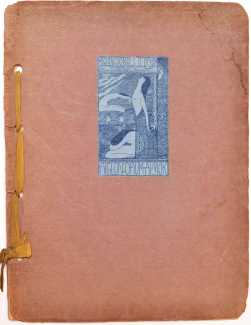 As well as a clear artistic debt to Aubrey Beardsley, Ópium-Álmok bears many similarities with other artists working in the Art Nouveau genre including Gustav Klimt and Julius Klinger, whose work Sassy would have been familiar with. The dreamlike naked figures and repeated patterns in the fabrics perfectly mirror the trance-inducing subject matter.
As well as a clear artistic debt to Aubrey Beardsley, Ópium-Álmok bears many similarities with other artists working in the Art Nouveau genre including Gustav Klimt and Julius Klinger, whose work Sassy would have been familiar with. The dreamlike naked figures and repeated patterns in the fabrics perfectly mirror the trance-inducing subject matter.


